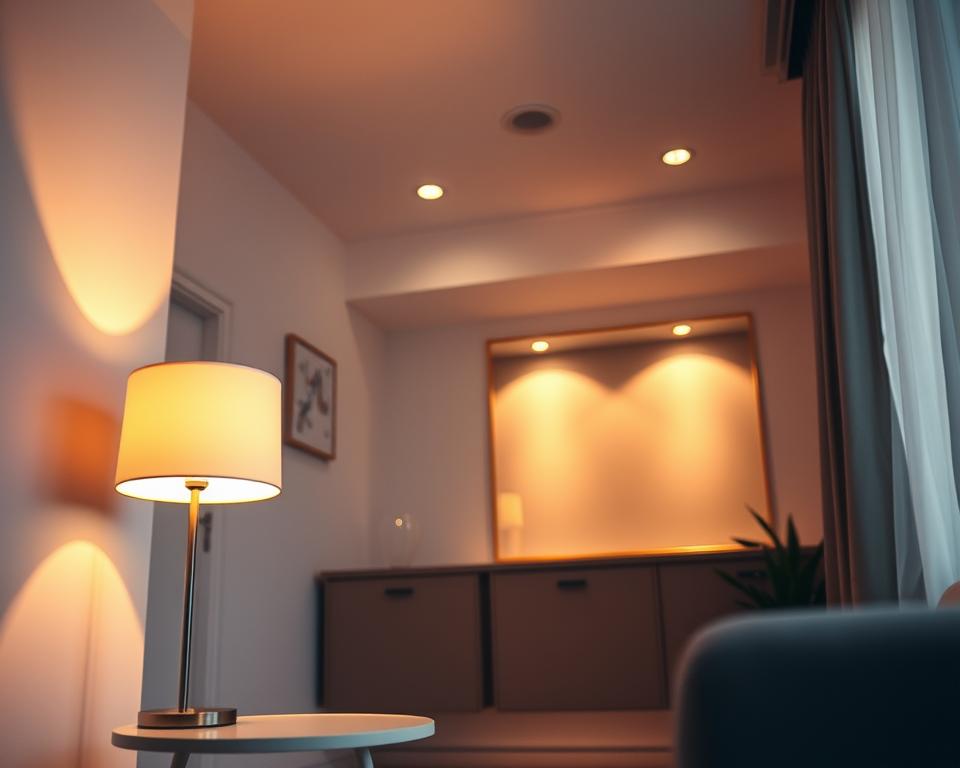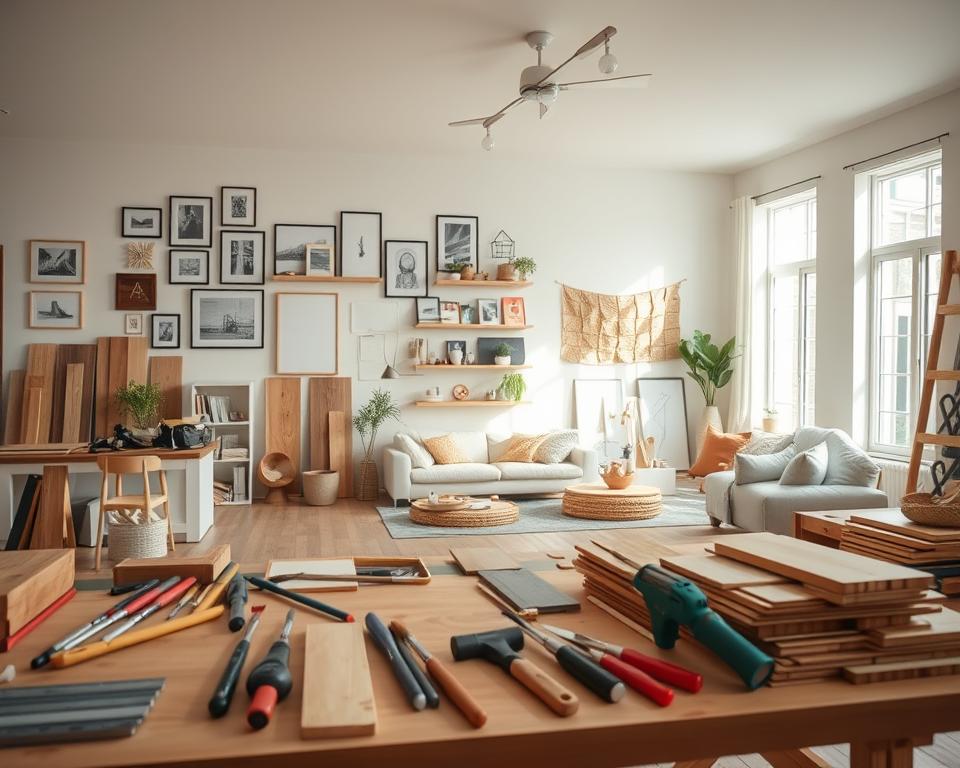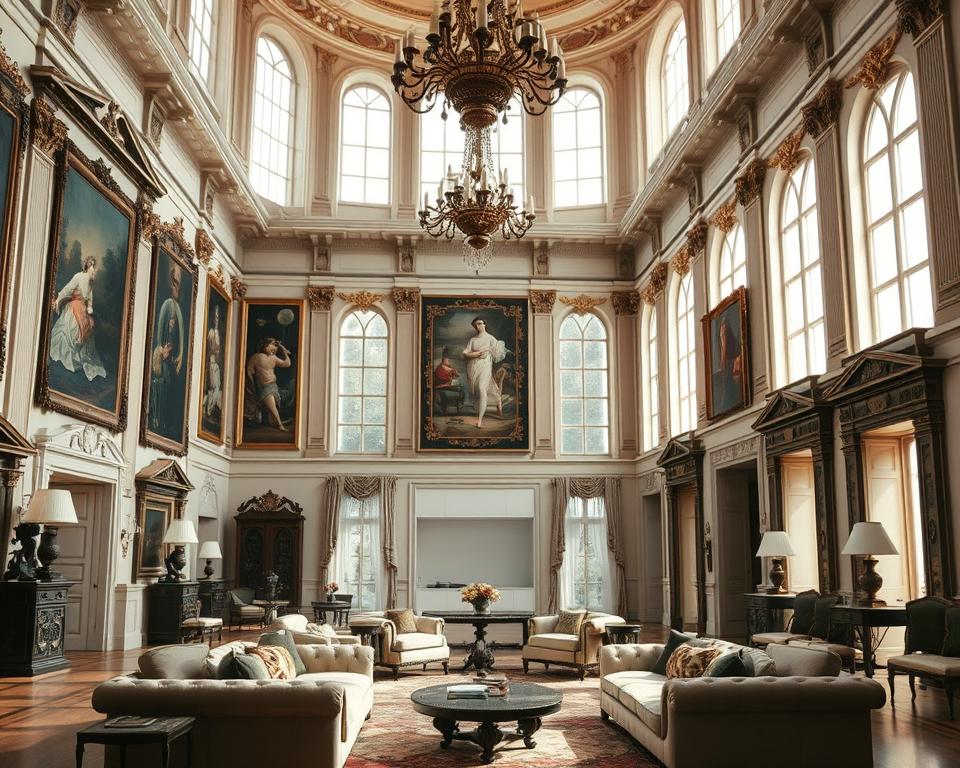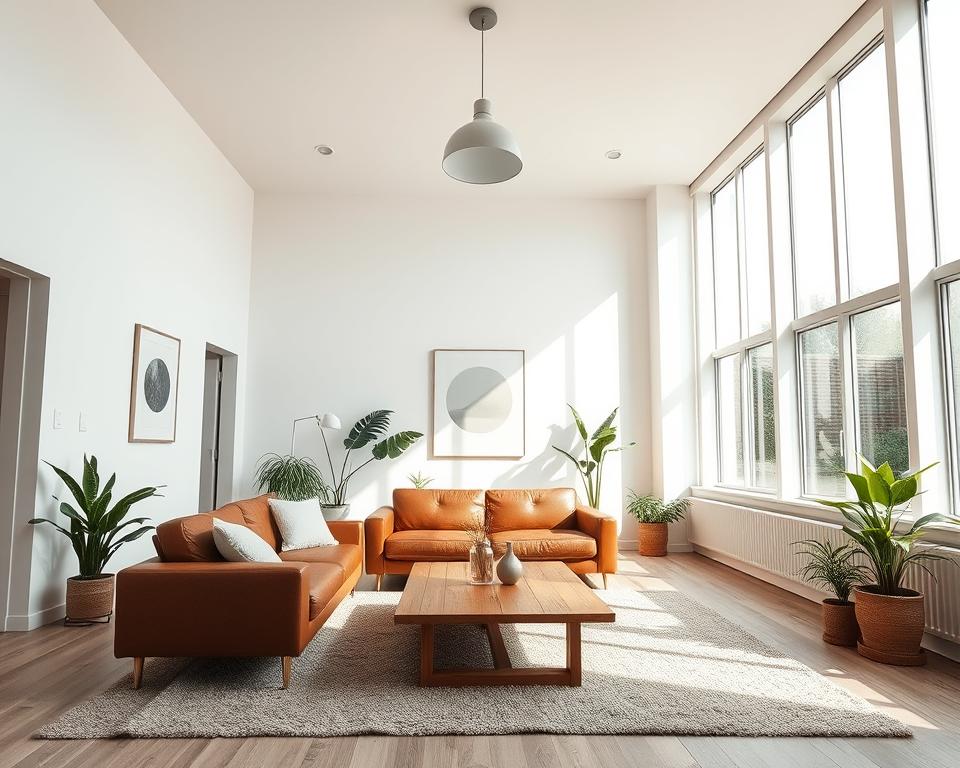Discover smart and stylish ways to make the most of every inch – transform your small space today!
In today’s world, making the most of small spaces is key. Whether you live in a tiny home or a city apartment, smart design can turn tight spots into cozy spots.
This article will show you how to make small areas work better, focusing on style and function.
Living in a small space doesn’t mean sacrificing style or functionality. With the right design approach, you can create a home that feels open, organized, and inviting.
Whether you’re in a cozy apartment or trying to optimize a compact room, strategic design choices can make all the difference.
Read more:
Discover the Best Interior Design Online Courses: A Complete Guide
Explore Interior Design Career Options: A Comprehensive Guide to Professional Opportunities
DIY Home Makeover: Easy Interior Design Hacks
The Ultimate DIY Interior Design Guide: From Planning to Execution
Key Takeaways
- Creative design solutions maximize functionality in compact living.
- Understanding challenges helps in planning effective layouts for small spaces.
- Utilizing space-saving solutions can significantly enhance small areas.
- A well-considered approach to tiny homes can optimize living conditions.
- Strategic organization and design can transform small spaces into stylish environments.
Understanding the Challenges of Small Spaces
Living in small spaces comes with its own set of challenges. It’s important to measure your space well to plan effectively. Knowing your space’s dimensions helps you make the most of it, ensuring it’s both functional and stylish.
Assessing Your Space
Before you start designing, take a good look at your space. Measure it all out. Note where doors and windows are, as they impact where you can put things. Think about these things:
- Square footage: Find out how much space you have.
- Natural light: See where the light shines best.
- Traffic flow: Watch how people move and keep paths open.
Getting to know your space well helps a lot in organizing and designing it.
Common Pitfalls in Small Space Design
Many people make common mistakes when designing small spaces. Knowing these can help you avoid them. Some common errors include:
- Using too big furniture, making the space feel cramped.
- Choosing dark colors, making rooms feel heavy.
- Not using the vertical space, missing out on storage.
Avoiding these mistakes can help you create a space that’s both useful and looks good.
Importance of Functionality in Small Areas
In the world of compact living, functionality is key. It turns small spaces into cozy and efficient homes. The right solutions make daily life easier and look good too.
Multi-Functional Furniture
In small areas, multi-functional furniture is a big help. Items like sofa beds and extendable dining tables save space. They make every inch count.
For example, a stylish ottoman can hold things and serve as a seat. A sofa bed lets guests stay over without losing style.
Creating Zones in a Small Space
Dividing a small area into zones makes it more useful. Using shelves or curtains as dividers helps. It creates spaces for work, rest, and meals.
This way, the area feels more organized and purposeful. It makes small spaces seem bigger.
| Furniture Type | Function | Benefits |
|---|---|---|
| Sofa Bed | Seating and Sleeping | Maximizes seating while providing a space for guests |
| Extendable Dining Table | Dining and Work | Accommodates extra guests and serves as a workspace |
| Storage Ottoman | Storage and Seating | Offers hidden storage and stylish seating solution |
Color Schemes That Enhance Small Spaces
Choosing the right colors is key for small spaces. The right colors can make a room look bigger. Lighter colors reflect light, making rooms feel airy.
Using these color strategies can really help make small spaces feel bigger.
Light and Bright Color Palettes
Light and bright colors are great for small areas. Soft whites, pastel tones, and light grays make walls seem to disappear. This makes rooms feel more open.
These colors also make the room feel calm and peaceful. They fit perfectly with minimalist design.
Utilizing Accent Walls for Depth
Accent walls are a great way to add personality. A bold color or pattern can add depth and interest. This breaks up the usual look of minimalist design.
Smart Storage Solutions for Limited Areas
In the world of compact living, organizing small spaces is key. Smart storage helps you use every inch of your space. It turns tricky areas into places that are both useful and stylish.
Creativity is essential for using vertical spaces and hidden storage. New designs can change how you store things and cut down on mess.
Creative Use of Vertical Space
Vertical space can really help in small areas. Wall-mounted shelves or tall cabinets make rooms look bigger. Open shelving stores books and decorations without taking up floor space.
Think about using pegboards in kitchens or craft rooms. They hold tools and essentials, making things look good and work well. The right vertical structures can make your space better and more organized.
Hidden Storage Options
Hidden storage is vital for keeping small spaces tidy. Furniture that does double duty, like beds with drawers or ottomans for storage, is very useful. Using space under stairs or behind doors also helps keep things neat.
Every hidden spot adds valuable space-saving solutions. They make life easier every day.
Furniture Arrangement: Tips and Tricks
Getting furniture right is key in small spaces. The right setup can make a tiny home feel big and welcoming. Knowing the pros and cons of open and closed layouts helps make the most of your space.
Open vs. Closed Layouts
Open layouts make small spaces feel bigger. They help move around easily and connect different areas. This is great for studios or apartments without clear rooms.
Closed layouts, however, create private zones. They help keep things organized. Both styles have their benefits for small spaces.
Flow and Accessibility
It’s important to keep paths clear in small spaces. Furniture should help move around, not block the way. Here are some tips:
- Put big pieces, like sofas or beds, against walls to free up space.
- Use rugs to mark areas and improve flow.
- Choose slim side tables for utility without taking up too much room.
Choosing the right furniture arrangement makes a small space feel big and welcoming. Paying attention to flow and access lets you use every corner well. This turns small spaces into places you love to be.
Lighting Techniques to Open Up Small Spaces
Lighting is key to making small spaces feel bigger. Choosing the right lights can make a big difference. It’s all about using natural light and indoor lighting to create a welcoming space.
Natural Light Maximization
Getting more natural light is a great way to open up small areas. Use sheer curtains or light shades to let sunlight in while keeping things private. Mirrors near windows can also help reflect light, making the room feel brighter and more open.
Layering Indoor Lighting
Using different light sources can turn small areas into cozy spots. Mix ambient, task, and accent lights for a layered look. Ambient light covers the whole area, task lights focus on specific tasks, and accent lights highlight decor. This way, every part of your small space gets the right amount of light, adding warmth and character.

Accessories and Decor to Optimize Space
Choosing the right accessories and decor is key in small spaces. Minimalist design focuses on simplicity, emphasizing function and clarity. Maximalism, on the other hand, loves bold colors and patterns. Knowing these styles helps pick items that add to the space without taking up too much room.
Minimalism vs. Maximalism
Minimalism in small spaces means choosing decor that’s useful yet elegant. It’s about having fewer items that mean more. Maximalism, however, lets you express yourself with bright and varied decor. The goal is to find a balance that fits your taste without making the space feel cramped.
Choosing the Right Size Art and Decor
It’s important to pick the right size for art and decor in small spaces. Big pieces can make a room feel tight. Too many small items can also cause clutter. Opt for a few standout pieces that match your style and enhance the space without losing functionality.
Utilizing Mirrors to Create Illusions
Mirrors are great for making small spaces look bigger and brighter. By placing mirrors in the right spots, you can make a room feel larger and more open. It’s all about using mirrors wisely to enhance small spaces.
Placement Strategies for Effect
Here are some tips for placing mirrors:
- Put mirrors opposite windows to reflect natural light and brighten the room.
- Large mirrors can be a focal point on plain walls.
- Place mirrors at eye level to make you feel like you’re part of the space.
- In corners, angled mirrors can make the room look bigger.
Types of Mirrors that Work Wonders
There are many mirror styles that can fit different decor themes. Here are a few:
- Wall-mounted mirrors: Great for saving floor space and reflecting light.
- Decorative mirrors: They come in unique shapes and finishes, adding beauty and function.
- Mirrored furniture: This combines reflective surfaces with useful items, improving light flow.
- Frameless mirrors: They offer a modern look that fits well in today’s spaces.
Outdoor Spaces: Expanding Your Living Area
Outdoor spaces are key to improving life in small homes. Even tiny balconies and patios can be welcoming. They offer a place for relaxation and creativity, making the most of limited space.
Small Balconies and Patios
To make a small balcony or patio cozy, choose smart designs. Use compact furniture to fit comfortably without clutter. Folding tables and stackable chairs are great choices.
Outdoor rugs add warmth and define the space. They make these areas perfect for both gatherings and quiet moments.
Incorporating Garden Elements
Adding nature to tiny homes enhances the living experience. Vertical planters are perfect for small gardens, holding herbs, flowers, or veggies. Herb boxes on railings or walls add beauty and usefulness.
For more ideas on blending indoor and outdoor spaces, check out this resource.
Innovative Technologies for Small Living
Urban areas are getting more crowded, and new tech offers ways to make small spaces better. Smart home devices are key in today’s compact living world. They help save energy and improve security, making your home feel bigger and more efficient.
Smart thermostats adjust to your life, and security cameras give you peace of mind. These advancements help you get the most out of your living space.
Smart Home Devices
Smart home tech makes daily tasks easier, especially in small spaces. Brands like Amazon Echo and Google Nest let you control lights, temperature, and security with your voice. This integration gives you more control over your space, making it both functional and cozy.
Space-Saving Appliances
Space-saving appliances are also a big help for small living. Think about compact washers and dryers that fit in closets, or kitchen gadgets that do multiple things at once. Brands like Bosch and LG make appliances that fit small areas well, keeping your home tidy and all features within reach.
By using these new technologies, living in small spaces can be both efficient and fun.



